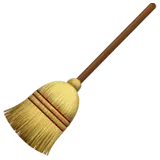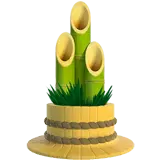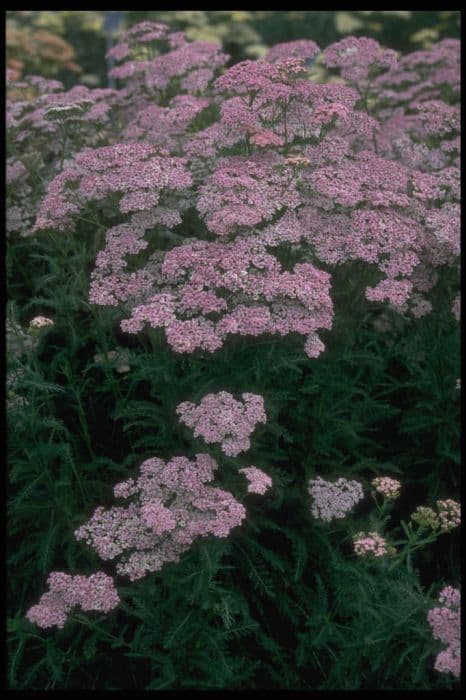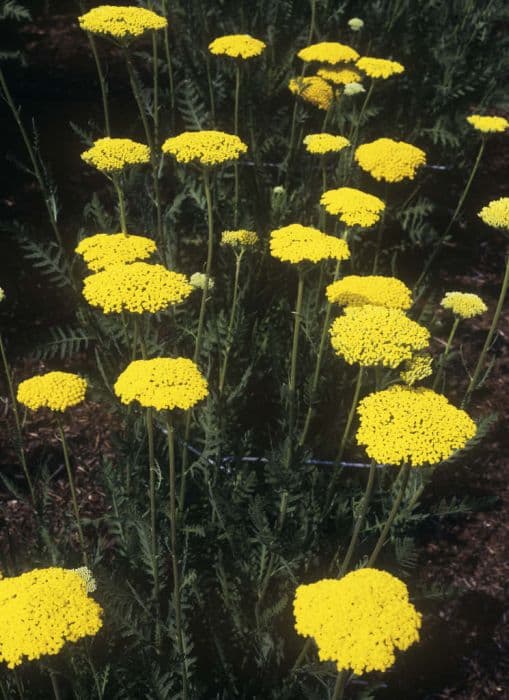Golden Fleabane Erigeron aureus 'Canary Bird'

ABOUT
Canary Bird is a charming flowering plant, notable for its clusters of daisy-like flowers that exhibit a sunny yellow color, reminiscent of the cheerful hue of a canary. The plant is composed of a low-growing, compact tuft of narrow, green leaves that create a dense mound. From this foliage base, numerous flower stems arise, topped with the bright yellow blossoms that have a central disk surrounded by slender rays. These flowers give off a delicate, fresh appearance and often attract various pollinators such as bees and butterflies. The leaf texture is generally fine, providing a soft, almost delicate visual quality that contrasts nicely against the boldness of the yellow flowers. Overall, Canary Bird presents itself with a delightful, low-maintenance disposition that can brighten up gardens or landscapes with its cheerful presence throughout its blooming season.
About this plant
 Names
NamesSynonyms
Canary Yellow Fleabane, Golden Fleabane, Yellow Daisy Fleabane.
Common names
Erigeron aureus 'Canary Bird'.
 Toxicity
ToxicityTo humans
The plant commonly known as Canary Bird is not widely recognized for being poisonous to humans. There is limited information on the toxicity of this specific variety of Erigeron aureus, which suggests that consuming any part of the plant is unlikely to cause severe toxicity in humans. However, it is generally advised to avoid ingesting plants that are not known to be edible due to the potential risk of allergic reactions or gastrointestinal discomfort.
To pets
Regarding the toxicity of Canary Bird to pets, there is no specific information indicating that this variety of Erigeron aureus is toxic to animals. It is not typically listed among plants that are known to be poisonous to pets. Nonetheless, as with humans, it is best to prevent pets from ingesting this or any plant not intended for consumption to avoid the possibility of an allergic reaction or gastrointestinal upset. If a pet does ingest part of the plant and exhibits any unusual symptoms, it is advisable to consult a veterinarian.
 Characteristics
CharacteristicsLife cycle
Perennials
Foliage type
Deciduous
Color of leaves
Green
Flower color
Yellow
Height
1 foot (0.3 meters)
Spread
1 foot (0.3 meters)
Plant type
Herb
Hardiness zones
4
Native area
North America
Benefits
 General Benefits
General Benefits- Attracts Pollinators: This plant attracts bees and butterflies which can help pollinate other plants in your garden.
- Low Maintenance: Canary Bird is known for being a low-maintenance plant, requiring minimal care once established.
- Drought Tolerant: It can survive in drier conditions, reducing the need for frequent watering.
- Colorful Blooms: With its bright yellow flowers, it adds a splash of color to gardens or landscapes.
- Groundcover: It can serve as an effective groundcover, preventing soil erosion and suppressing weeds.
- Cold Hardy: This plant can withstand cooler temperatures, making it suitable for gardens in various climates.
- Wildlife Habitat: It provides a habitat for various beneficial insects, contributing to biodiversity.
- Long Blooming Season: It has a long flowering period which ensures continuous color in your garden for a longer time.
- Easy Propagation: Canary Bird can be easily propagated, allowing gardeners to create more plants for other areas or to share with friends.
- Edging Plants: Due to their compact size, they are excellent for borders or edging in garden design.
 Medical Properties
Medical Properties- This plant is not used for medical purposes.
 Air-purifying Qualities
Air-purifying QualitiesThis plant is not specifically known for air purifying qualities.
 Other Uses
Other Uses- Photography subjects: With its bright yellow flowers, 'Canary Bird' makes an excellent subject for macro and nature photographers.
- Educational tools: Biology teachers can use 'Canary Bird' in lessons about plant reproduction and pollination, as it attracts a variety of pollinators.
- Art inspiration: Artists can draw inspiration from the vibrant colors and delicate form of 'Canary Bird' for paintings, drawings, or textile designs.
- Natural dye: The flowers of 'Canary Bird' may be used to produce a natural yellow dye for fabrics or paper.
- Ecological research: Researchers can use 'Canary Bird' to study plant adaptation and survival in various soil types due to its hardiness.
- Hobby gardening: 'Canary Bird' is an ideal plant for hobbyists who enjoy cultivating and tending to alpine or rock gardens.
- Floral arrangements: Fresh or dried, the flowers can add a splash of color to bouquets or indoor decorations.
- Garden photography workshops: 'Canary Bird' could serve as a great teaching tool for workshops on how to photograph gardens and plants.
- Cultural studies: This plant can be used as a case study to understand the significance of flora in local folklore and traditions where it is native.
- Companion planting: 'Canary Bird' may be planted alongside vegetables and herbs in a garden to attract beneficial insects and enhance biodiversity.
Interesting Facts
 Feng Shui
Feng ShuiThe plant, commonly known as Golden Fleabane, is not used in Feng Shui practice.
 Zodiac Sign Compitability
Zodiac Sign CompitabilityGolden Fleabane is not used in astrology practice.
 Plant Symbolism
Plant Symbolism- Persistence: Erigeron as a genus is known for its persistence, often thriving in tough conditions, and 'Canary Bird' shares this trait, symbolizing the ability to endure and thrive in various circumstances.
- Felicity: The bright yellow flowers of 'Canary Bird' symbolize happiness and good spirits, much like the cheerful song of a canary.
- Healing: Some Erigeron species have been used in traditional medicine, hence 'Canary Bird' may carry the symbolic meaning of healing or alleviating ailments.
- Protection: In folklore, certain plants were thought to have protective qualities, and the robust nature of 'Canary Bird' suggests a symbol of safeguarding against adversity.
 Water
WaterThe Canary Bird Fleabane should be watered deeply once a week, allowing the soil to dry out between waterings. Use approximately 1 gallon of water per plant for each watering session to ensure the soil is moistened thoroughly. Increase the frequency to twice a week during periods of extreme heat or drought. It's important not to overwater, as this plant does not tolerate waterlogged soil well. During the winter months, reduce watering as the plant enters a dormant period and requires less moisture.
 Light
LightThe Canary Bird Fleabane thrives best in full sun to partial shade. It should be placed in a location where it receives at least 6 hours of direct sunlight daily. The ideal spot would be one that gets morning sunlight and is shaded in the late afternoon to protect it from the hottest part of the day.
 Temperature
TemperatureThe Canary Bird Fleabane prefers moderate temperatures, with ideal growing conditions between 60 and 75 degrees Fahrenheit. It can tolerate minimum temperatures down to 20 degrees Fahrenheit and maximum temperatures up to 80 degrees Fahrenheit. Avoid exposing the plant to extreme temperature fluctuations to maintain its health and vigor.
 Pruning
PruningThe Canary Bird Fleabane benefits from regular pruning to encourage bushier growth and more abundant flowering. Prune lightly in early spring just as new growth begins, and deadhead spent flowers regularly to prolong the blooming period. A more thorough pruning can be done after the main flowering season to shape the plant and remove any woody or dead stems. The best time for major pruning is typically late fall to early spring.
 Cleaning
CleaningAs needed
 Soil
SoilThe best soil mix for the Golden Fleabane ('Canary Bird') should be well-draining and rich in organic matter. A mixture of loam, sand, and compost is ideal, ensuring it retains moisture without becoming waterlogged. The soil pH should be slightly acidic to neutral, ranging between 5.5 and 7.0 for optimal growth.
 Repotting
RepottingGolden Fleabane ('Canary Bird') does not generally require frequent repotting and can thrive in the same container for several years. It should be repotted when it has outgrown its current pot or when the soil is depleted, usually every 2-3 years.
 Humidity & Misting
Humidity & MistingGolden Fleabane ('Canary Bird') prefers moderate humidity but is quite adaptable and can tolerate drier air typical of indoor environments. It thrives best in humidity levels ranging from 40% to 60%.
 Suitable locations
Suitable locationsIndoor
Place in a bright spot, water moderately, and ensure good air circulation.
Outdoor
Plant in sunny to part shade, ensure well-draining soil, and avoid waterlogging.
Hardiness zone
4-8 USDA
 Life cycle
Life cycleThe Canary Bird Flower (Erigeron aureus) begins its life cycle when seeds are sown in well-draining soil, typically after the last frost in spring. Seedlings emerge and the plants start the vegetative growth phase, developing a rosette of leaves close to the soil surface. With adequate sunlight, water, and time, the Canary Bird Flower enters the flowering stage in late spring to early summer, producing numerous daisy-like yellow flowers that attract pollinators. After pollination, the flowers develop into seed heads and by late summer or early fall, seeds are mature and ready to be dispersed. Once seeds are dispersed, the plant typically dies back in winter, especially in regions with cold climates, completing its annual life cycle. Some individuals may behave as short-lived perennials, surviving through mild winters and flowering in subsequent years.
 Propogation
PropogationPropogation time
Spring-Early Summer
Propogation: The Erigeron aureus 'Canary Bird', commonly known as Golden Fleabane, is best propagated by seed. Sowing can be done in late winter or early spring, when temperatures are cool. The most popular method involves scattering the seeds directly onto the surface of a well-draining soil mix in pots or flats. Typically, the seeds require light to germinate, so they should not be covered with soil but pressed gently into the substrate. The pot or flat needs to be kept moist but not waterlogged, and placed in a spot that receives indirect sunlight. Germination can take between two to five weeks. Once seedlings have grown strong enough, they can be transplanted to their final positions outdoors after any risk of frost has passed.









